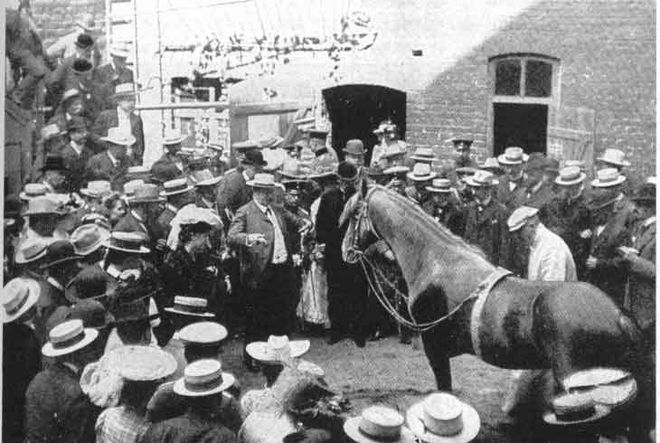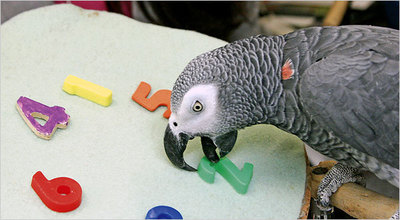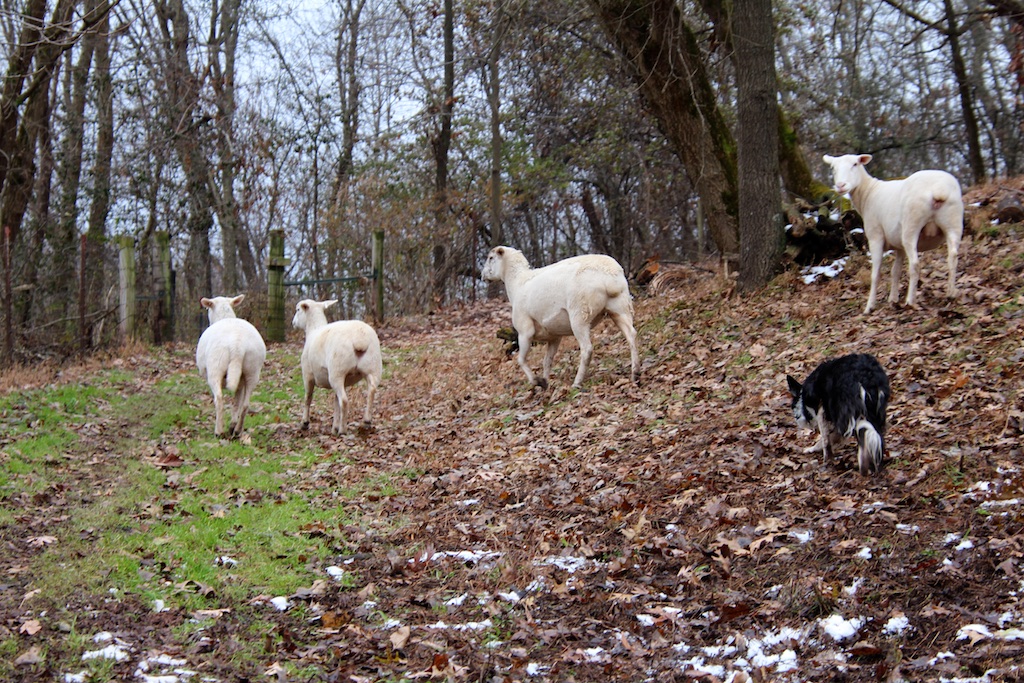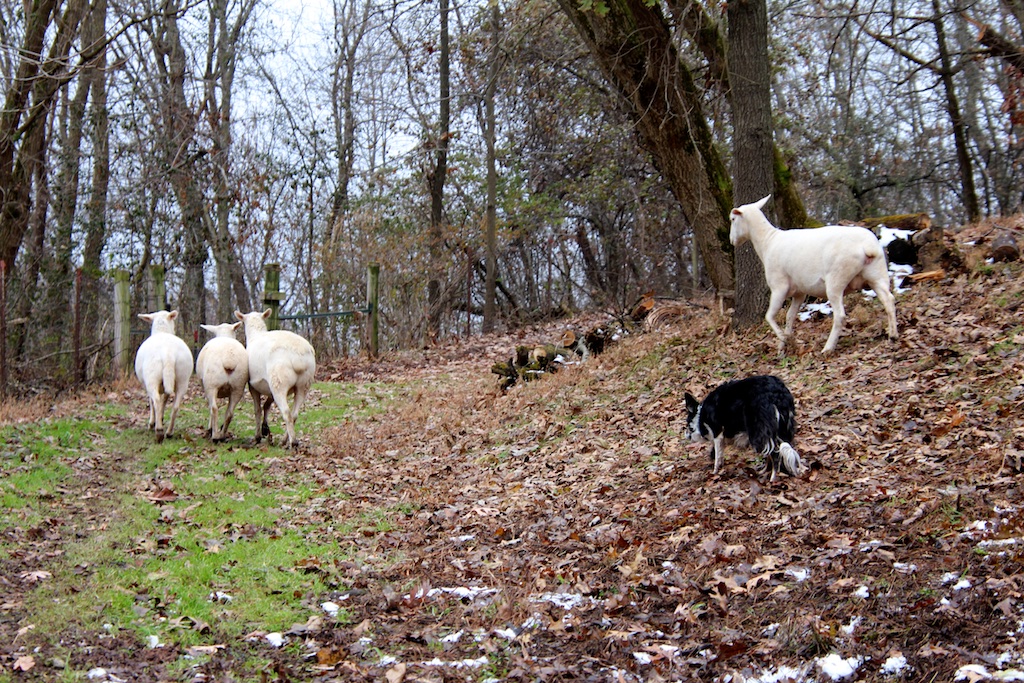Have you seen the news that a speech pathologist, Christina Hunger, has taught her dog to “talk,” or to communicate not just nouns and verbs, but “her thoughts and feelings as well”? Christina taught her Catahoula/Blue Heeler mix, Stella, to use a “sound board,” similar to the kind she uses to help very young children communicate.
Here’s a video:
There are so many ways to deconstruct this–here are just a few:
One the one hand, it’s easy to dismiss this as a naive Dr. Doolittle-ish desire to “talk to the animals”. There are innumerable examples of well-meaning people who believed they had cracked the code and found a way directly into a non-human animal’s brain. The most famous, of course, is the case of the horse, Clever Hans, who was believed by his owner and math teacher, Wilhelm von Osten, to understand arithmetic. It took extensive observations by Professor Oscar Pfungst to find that Clever Hans was clever indeed, but not because he could do addition and division in his head. The horse was a brilliant observer, and used subtle cues from people around him to know when he had found the right answer (he pawed out a number with a front hoof).
Animals are much, much better than is often realized at reading visual cues from us humans. And many is the time when someone was sure their animal knew X, but only because he or she was cuing off of the person in the room. Drs. Suzanne Hetts and Dan Estep visited a man who got a lot of press in Denver by claiming his dog could do math and geography. (Geography?) The dog answered “yes” or “no” depending on the number of times he pawed his owner’s hand. As they relate “The whole thing fell apart when we put a sheet in between him and the dog…”.
On the other hand, carefully tested and credible experiments have shown that animals can indeed learn to make sounds or gestures that are equivalent to human speech. One of the most well known is the work of Dr. Irene Pepperberg who trained the African Grey parrot Alex to use words not just for nouns or verbs, but for concepts like “bigger” or “different”. Famously, Alex’s last words, said to Irene as he did every night, “You be good, see you tomorrow. I love you”.
What is not as well-known is what Alex said to Dr. Pepperberg when she had to leave him at a veterinary clinic over night, one of the few times he’d been away from her. As she walked out the door he said: “I’m sorry, I love you, I’m sorry.” (Knowing that pretty much destroyed me the few times I’ve had to leave a dog or cat at a vet clinic.) Nor do most articles mention that Alex once looked into a mirror and asked “What color Alex?” He’d never been taught the word “grey”. Alex clearly relished being able to communicate, including saying, spontaneously, “You go away!” to an impatient trainer.
And then, of course, there’s the famous chimpanzee Washoe, who began using sign language herself after observing her caretakers doing it. She went on to learn up to 350 signs, used them spontaneously and combined them together when she didn’t know the word. Watermelon became “candy fruit,” a thermos became “metal cup drink,” a swan became “water bird”.
And then there was Koko, the famous gorilla who was taught by Ms. Patterson to use up to 1,000 ASL words. (Don’t miss Koko and Robin Williams in the video below, it’s priceless.)
What’s relevant here is that the researchers and trainers of these animals faced not just skepticism, but in some cases downright derision. (See, for example, Dr. Pepperberg’s book, Alex and Me.) They had to fight for acceptance, funding and respect.
So, we have these two perspectives, both absolutely accurate. What makes the latter different from the former is that in the case of Alex, Wahoe and Koko, careful tests were done to eliminate the Clever Hans Effect, and objective observers were brought in to help discern what the animal was doing, or not doing.
Which is why I would like to see more about Christina Hunger’s work, and ask a lot of questions. I find it important that Hunger is a speech pathologist who works with young children, and uses the same methods on Stella. Pepperberg did something similar with Alex, repeating and prompting over and over until he “got it”. But the questions need to be asked. Does Stella use the board spontaneously? Will she use it if she can’t see Ms. Hunger? How does Stella’s use of the board compare to that of young children?
And perhaps the most important question, based on a comment sent in recently by Sandy on an earlier post: “Message on a T-shirt; “I wonder what my dog named me?” The question is, do we want to know? Now there’s a pandora’s box for you.
MEANWHILE, back on the farm: I just happened to get an interesting set of shots of Maggie driving four sheep up the hill away from the others. Note that the ewe on the right (Snow White) is looking directly at Maggie. She had drifted off to the right, in a time honored strategy used by smart sheep: “I’ll just slide over this way and hope the dog stays focused on the larger group.”
What I love about this photo is that, after taking it, I realized it was a great example of Maggie using her eye to control the sheep, not just her body. She didn’t moving her torso to the right at all, but I would bet the farm that her eyes moved to the right and looked directly at Snow White.
And look what happened: Snow White decided to rejoin the group, and they all went up the hill shoulder to shoulder.
Some lovely light a few days ago. Right now everything is covered in snow. Again. Fourth significant snow storm of the season. Oh my. It’s going to be a long winter.
But then, there’s still color and beauty everywhere if you look for it.
And so, my question to you: If your dog had a nickname for you, what would it be?
Poop4U Blog
via www.Poop4U.com
Trisha, Khareem Sudlow
 Reviewed by BruceDayne
on
November 11, 2019
Rating:
Reviewed by BruceDayne
on
November 11, 2019
Rating:









No comments: